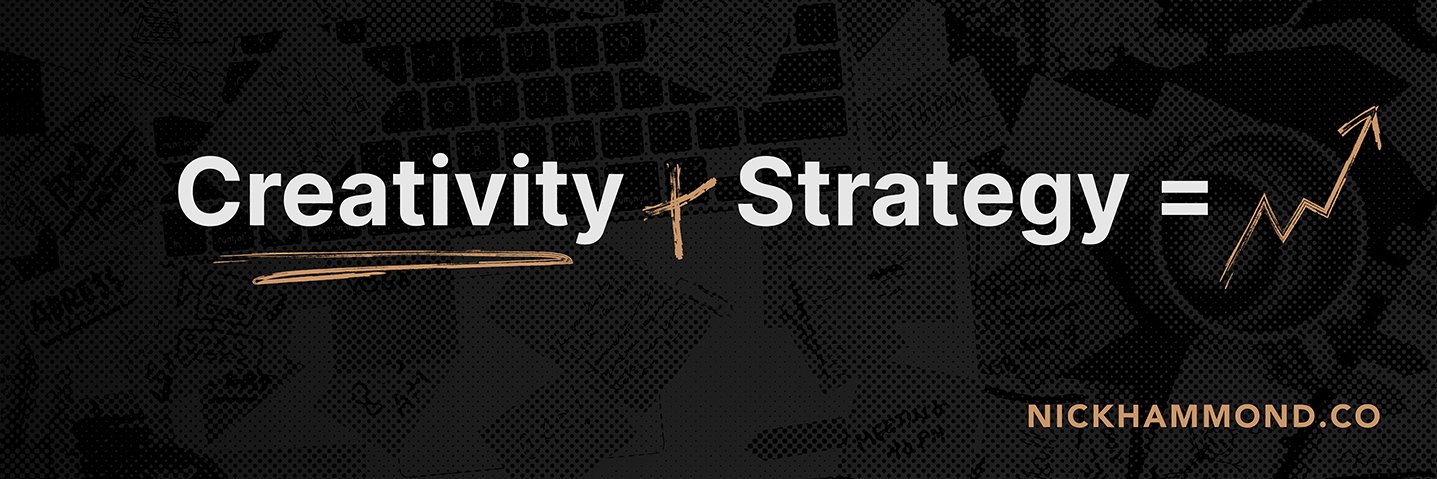
Nick Hammond
@NHammondDesign
Freelance Graphic Designer for Outdoor & Lifestyle Brands (ex- Backcountry / Fanatics / Logitech). Disagreeable giver.
The best creative work feels like it could only have been made by the people who made it. It has fingerprints. DNA. Everything else is just professional-grade furniture assembly.
Clients don't kill creativity. Fear of clients kills creativity. Most of the limitations you think they have are actually limitations you've imposed on yourself before the conversation even starts.
Creative departments that focus on winning awards are like restaurants that focus on food photography. The picture might be perfect, but nobody's getting fed.
The work you're embarrassed to put in your portfolio might be the work that paid for your mortgage. Both things can be true. Professional creativity is about serving two masters: your vision and your rent.
Every great campaign has a stupid version that almost got made. The distance between stupid and brilliant is often just one good decision. Usually the decision to subtract, not add.
The most dangerous creative feedback isn't "I hate it." It's "I love it, but..." That "but" will eat your concept alive if you let it. Sometimes love means leaving something alone.
Creative people are terrible at predicting what will work because they optimize for surprise, and audiences optimize for recognition. The magic happens where those two needs intersect.
The brief that changes mid-project isn't broken communication. It's evolution. Good work teaches you what you actually need, which is rarely what you thought you needed when you started.
Most creative departments are museums of almosts. Concepts that almost worked, campaigns that almost launched, ideas that almost changed everything. The distance between almost and actually is where careers are made.
The work that gets killed for being "too weird" often dies because no one figured out how to make weird feel inevitable. Context is everything. Weird needs a reason to exist.
The difference between a designer and an art director isn't skill level. It's decision level. Designers solve problems. Art directors decide which problems are worth solving.
Focus groups will tell you that water is wet and fire is hot, but they can't tell you if your campaign will make someone buy soap. Some truths only reveal themselves in the wild.
"This looks like everyone else" is the creative equivalent of "this tastes like chicken." It's not wrong, but it's not helpful. Tell me who specifically, and why that's bad for this particular project.
The creatives who get promoted aren't the ones with the best ideas. They're the ones who make other people's ideas better. Leadership in creative departments is about elevation, not creation.
Creative reviews where everyone loves everything are more dangerous than creative reviews where everyone hates everything. Love without specificity is just politeness. At least hate gives you something to fix.
The work that feels derivative to you probably feels fresh to everyone else. You've been marinating in references for years. They haven't. Your depth is their surface.
Inspiration is overrated. Discipline is underrated. The muse doesn't show up on schedule, but deadlines do. Learning to create without feeling inspired is how you become a professional.
Most creative briefs answer the wrong question. They tell you what to make instead of why it needs to exist. The "why" is where the real work lives. Everything else is just craft.
The best creative partnerships aren't 50/50. They're 100/100 with different strengths. One person sees the destination, the other sees the path. Both are right about different things.